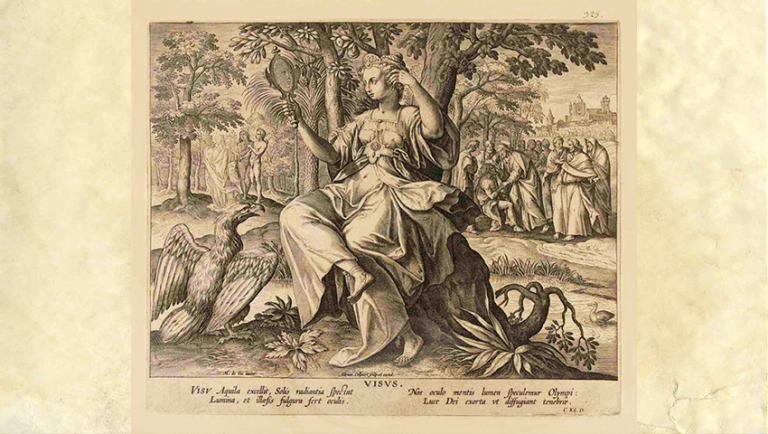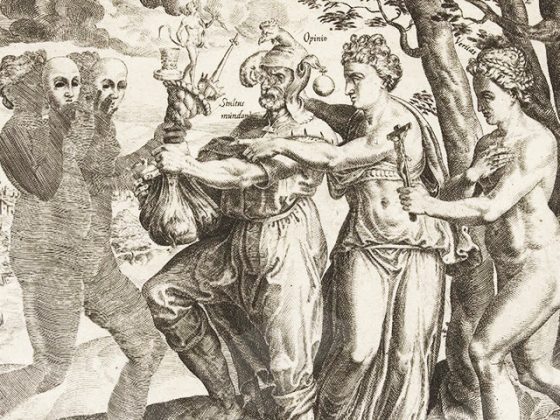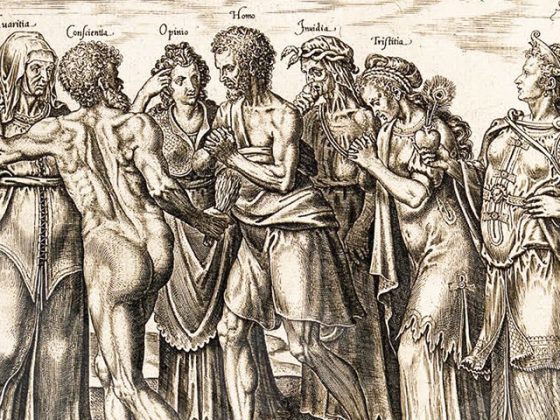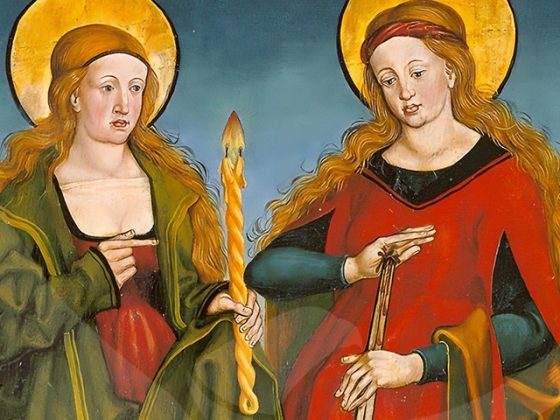Dearest friends:
With immense pleasure I send you one of the five engravings that I am sending you gradually and that are related to the five senses that our organic machine possesses.
First of all, we must know that the human senses are not only doors to make us perceive the material forms of the physical world, but they also constitute a gift from our Divine Mother to be able to observe, grasp and feel the work of our Creator. We all know by now that we do not only have these five senses, but that we also have been endowed with the chakras, discs or magnetic wheels that we possess in our spiritual or metaphysical nature.
Now then, as we have already stated in previous lines, on this occasion, we will deal only with the sense of sight. And for this we will turn to the artist Maerten de Vos, of Flemish origin, who lived between 1532 and 1603, and his companion Adriaen Collaert, designer and engraver, also Flemish, who lived between 1560 and 1618. Both carried out a complex allegorical representation of the five senses. In this case it is in reference to:
…THE TRANSCENDENCE OF THE SENSE OF SIGHT
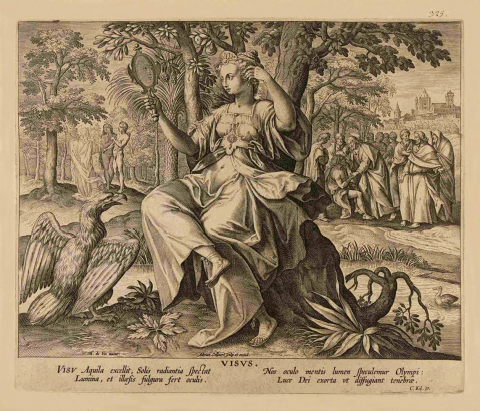
First, we will say that the human senses are shown in these engravings by means of a lady or a woman as the central base. Why? Answer: Because the qualities of these senses are like beautiful pearls that the Eternal Feminine has wanted to give us so that we can recreate ourselves in the various ways in which the environment of creation is shown to us.
We see, then, a lady who looks at herself in front of a mirror and, reflecting herself in it, is arranging her hair. Let us not forget here the fact that the science of Alchemy speaks to us of the mirror of transmutatory art. This mirror allows us to know, over time, what our superior changes have been thanks to the work on ourselves.
An eagle, symbol of the Spirit's ability to raise us up to the heights of the heavens, accompanies her at her feet. This bird is known for its keen sense of sight, which allows it to see its preys from enormous heights.
Likewise, we see in the background of this precious engraving the image of Adam and Eve being expelled from the earthly paradise, that is, falling into misfortune for having FORNICATED, which made them lose the paradise of Consciousness.
Behind Adam and Eve we can contemplate an apple tree, a fruit that biblically and Kabbalistically allegorizes sexuality.
In front of the couple, an Adept appears who recriminates them for that committed act and, curiously, Adam is pointing with one of his hands to Eve as if wanting to make her responsible for the angelic fall for having allowed herself to be seduced by the Luciferic forces. All this is described in the biblical passages in that sentence that tells us: “Of every fruit of the garden of paradise you may eat, but of the fruit of the tree of good and evil [sexuality] you shall not eat, for if you do you will die…”
On the other side of the engraving, in the background, we are shown the Great Kabir of Galilee performing one of his portentous miracles, such as having restored the sight of a blind man. This act has two interpretations, since such a miracle can refer to the concrete fact that allowed the blind person to see again, that is, to contemplate creation; but, gnostically, it also has a symbolic aspect that speaks to us of the power of the intimate Christ, who is able to give us back the true vision of the material world and show us the realities of the superior worlds of Consciousness. That would be the true vision of the Great Reality.
It is good to emphasize here, in these pages, that as our animal Ego is being disintegrated by the powers of Devi-Kundalini or Stella Maris ─our inner Divine Lady─, we are then recovering our true level of Being and that will be our true image.
To conclude we see that in the background of this engraving we can see a church, which refers to the Philosophical Abode or Abode of our BEING.
This engraving has, in the bottom part, some phrases written in Latin that express the following:
Visu aquila excellit, solis radiantia spectat. Lumina, et illaesis fulgura fert oculis. Nos oculo mentis lumen speculemur Olympi: Luce Dei exorta vt diffugiant tenebrae.
Translation: ‘The eagle stands out by sight, looks at the radiant lights of the sun, and holds the brightness with unharmed eyes. May we observe with the eye of the mind –clairvoyance– the light of Olympus: with the light of God emerged so that darkness may vanish.”
I now give you some sentences conducive to reflection:
“Darkness is a prison, night a kind of cloak placed over our soul.”
Victor Hugo
“He who was born in darkness and died in darkness did not unfortunately live.”
Horacio
“The most profound principle of human character is the longing to be appreciated.”
William James
“I prefer being able to appreciate what I cannot have than to have what I am not able to appreciate.”
Orison Sweet Marden
“We learn not in school but in life.”
Seneca
LAUDATOR TEMPORIS ACTI.
─'Praiser of times past'─.
KWEN KHAN KHU


